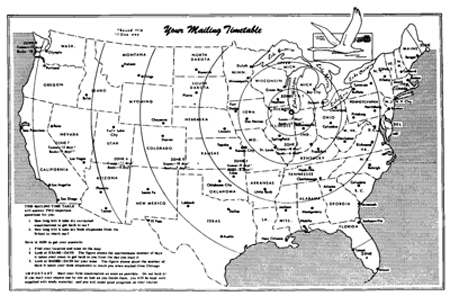From a 1967 book — Teaching by Correspondence — in which Chicago plays a role: “In 1892, Dr William R. Harper, who had already experimented with correspondence teaching to help train Sunday school teachers, became President of the University of Chicago and immediately established a correspondence teaching division of the University’s Extension Department.” (3)
From the chapter on efficiency and organization:
Every step which can be taken to reduce the time between posting to the school and receiving its reply helps to overcome the barrier of time which separates students from their teachers. The American School in Chicago, for example, provides the students with a map showing postal zones and the time taken by mail from each zone to reach the school, so that wherever students live they will know the time they must allow for mail service (Fig. 1).
Time-saving practices
In organizing a correspondence school, there are basic time-saving practices which not only effect economy in the use of staff, but give speedier service to students because they reduce the number of records to be kept and expedite compilation of essential records. (67)
Teaching by Correspondence: UNESCO Source Book. Longmans/Unesco, 1967.

